Cloud Monitoring: A Complete Guide
Cloud monitoring is the process of tracking, reviewing, and managing the health and security of cloud-based systems and applications.
Cloud monitoring is essential for any organization that relies on cloud-based applications and services. It provides visibility into the performance of these systems and can help identify potential issues before they cause downtime or data loss.
There are many different aspects of cloud monitoring, including performance monitoring, security monitoring, and health monitoring. Each of these areas is essential to keeping a cloud system running properly.
In this blog, we will take a closer look at each of these areas of cloud monitoring and why they are so important. We will also provide some tips on how you can get started with cloud monitoring for your own system.
- What is Cloud Monitoring?
- Types of Cloud Monitoring
- How does Cloud Monitoring works?
- Why monitor Cloud services?
- Top 6 Cloud Monitoring Tools
- What are the metrics to be monitored?
- Benefits of Monitoring Tools
- Cloud Monitoring Best Practices
What is Cloud Monitoring?
Cloud monitoring is the process of tracking, reviewing, and managing the health and security of cloud-based systems and applications. It allows organizations to identify and diagnose problems in real time, ensuring that critical systems are always up and running.
Depending on the type of service you require, cloud monitoring can be grouped under various categories- for monitoring websites, databases, virtual network, cloud storage or even the entire infrastructure.
Types of Cloud Monitoring
Cloud is not one single entity, it comprises of many components. Subsequently, software developers have created monitoring tools catering to these components either individually or as for a whole cloud environment.
A broad classification of all the available tools are given below:
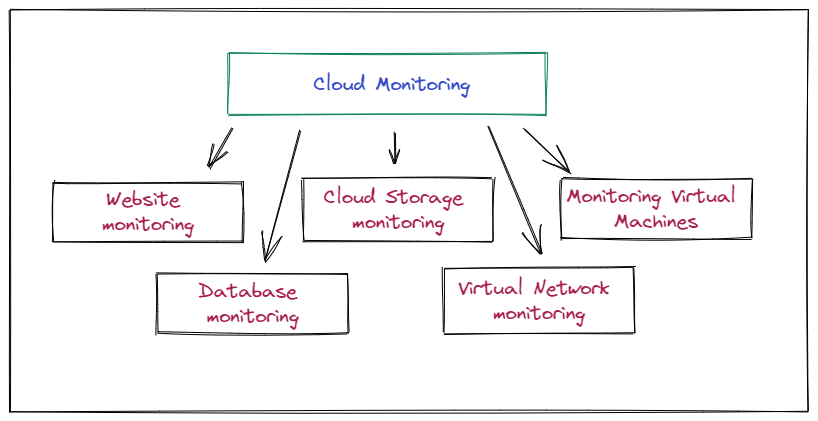
Website monitoring
Monitoring your website is important to ensure its availability and performance. Website monitoring tools can help you accomplish this by periodically checking your site for uptime, downtime, and response time.
Database monitoring
Database monitoring is the process of tracking and managing the performance of databases. It is a critical part of ensuring that databases are running optimally and that data is accurate and consistent.
There are many techniques and processes that fall under the umbrella of database monitoring. These include performance tuning, capacity planning, monitoring tools, and more.
Cloud Storage monitoring
Cloud storage monitoring is the process of tracking and managing the data stored in a cloud environment. The goal of cloud storage monitoring is to ensure that data is available and accessible when needed, while also protecting against unauthorized access or modification.
One of the challenges of cloud storage monitoring is that it can be difficult to track and manage data across multiple cloud storage providers. This is because each provider has its own process and technique for storing and managing data.
Virtual Network monitoring
This type of monitoring creates software versions of network technology like firewalls, routers etc. and they give operational data of this software. Apart from analyzing, they also provide management of network traffic.
Monitoring virtual machines
Through this monitoring, we get to look into the health of virtual machines that host the applications. Tracking users, traffic and the status of each machine in response to fluctuating workloads is what we get done here.
How does Cloud Monitoring work?
Cloud is a vast environment that hosts several web applications on the internet. It ranges from healthcare to education to government, banking and financial services etc. we know all of these services boast a huge database. Managing all these data would be difficult practically. This is where cloud monitoring applications come in handy!
Cloud monitoring tools - usually the cloud provider has some in-house monitoring tools available. These are one of the commonest choices because there is no need to additionally install them, integration becomes easier and monitoring is convenient.
Apart from in-house tools, service providers like SaaS give independent tools that work seamlessly with cloud applications.
Both these tools work in a similar manner, they scan the app and collect data on the following parameters which may impede service delivery for businesses to customers.
- Cybersecurity - cyberattacks are one of the major concerns today, breaching a firewall network is practically not a difficult task for skilled hackers. To save your applications from such vile attacks, a monitoring service may prove useful. These cloud monitors routinely check your system for any potential vulnerability and bring it to notice before any attack takes place.
- Detect and fix errors - there are chances of many errors occurring at the backend of the application during an update or during the introduction of any change in in-app features. These can create unnoticed errors. Monitoring tools run through the entire code to debug and fix any such mishaps.
- Monitors speed metrics - speed is a paramount feature any end user looks for, in an application in the present times. Daily updating of traffic speed and control is made available with these monitoring tools.
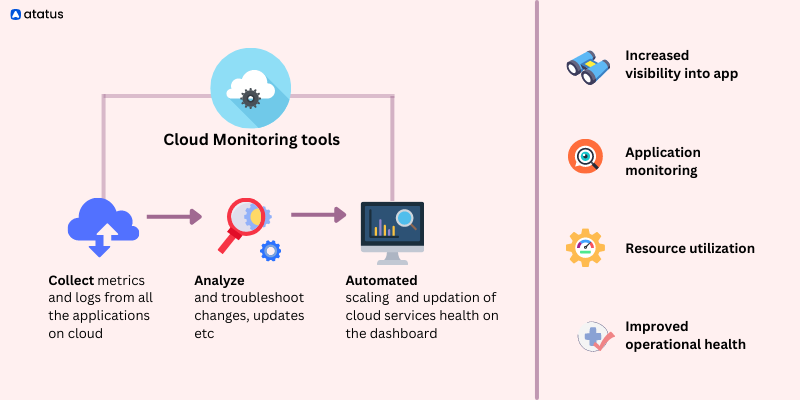
Why monitor Cloud services?
A 2022 report cites about 68% of companies complaining about their cloud misconfiguration. Any errors in configuration can lead to serious security threats including cyberattacks, performance degradation and cost implications. Reports show that attackers aren't just behind the obvious data sets but may land upon some innocuous data containing the personal information of millions of customers.
This tampers with the unit cost and cost of goods sold metrics. Apart from this, you have to regularly run a thorough checkup of the entire cloud software, and make the necessary changes as and when required, in order to host a healthy cloud environment.
Although many leading applications can be tracked using application monitoring tools and likewise, cloud monitoring is an overall remedy. Monitoring can be automated or manual, and apart from observing the infrastructure, skilled engineers can leverage the potential of such monitoring tools for other purposes too -
- Get visibility into user, files and application framework
- Identifying potential vulnerabilities before time
- Enhance capabilities owing to a possible scale-up of the app
- Prepare security audit reports
- Monitor data from variable locations
Cloud services that you should monitor
Cloud systems may be either private or public. In certain cases, it can work in between both these as a hybrid cloud. Whatever the structure, the primary function remains the same - organizing and ensuring all your data stay intact and protected!
A private cloud’s system and software stack are completely visible and accessible. This property makes private cloud relatively easy to monitor compared to public or hybrid clouds.
Monitoring the workload on your private cloud means accounting for all the configuration and architectural changes and quantifying the quality of service provided to consumers.
This is not so easy when it comes to hybrid clouds, since data are present across both public and private domains, securing the data might be a challenge.
Developers can break down data sets to decide where to store what.
There are multiple types of cloud services to monitor. Some of them are listed here:-
SaaS - Software like SalesForce, Atatus, Dropbox.
PaaS - Platform.sh, CloudFoundry, Heroku.
IaaS - Servers hosted by Azure, AWS, and DigitalOcean.
FaaS - Serverless applications like Azure functions, AWS Lambda.
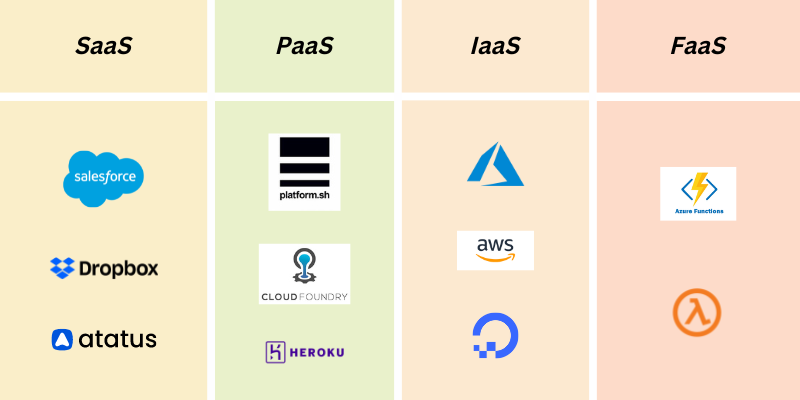
Top 6 Cloud Monitoring tools
There are over a dozen cloud monitoring tools available out there. But choosing the right fit for your business is the task at hand here. Let’s look at some of these prominent cloud monitoring tools:
#1 Atatus
Atatus is a full-stack observability platform. They offer comprehensive web application monitoring through various tools like - APM, Real User Monitoring, Infrastructure Monitoring, Logs Monitoring, Synthetic Monitoring and API analytics.
You can analyze the performance, functionality, and availability of your website or your application using these tools and attain progressive results. Also, their affordable pricing and ease of using makes them a compelling choice for developers.
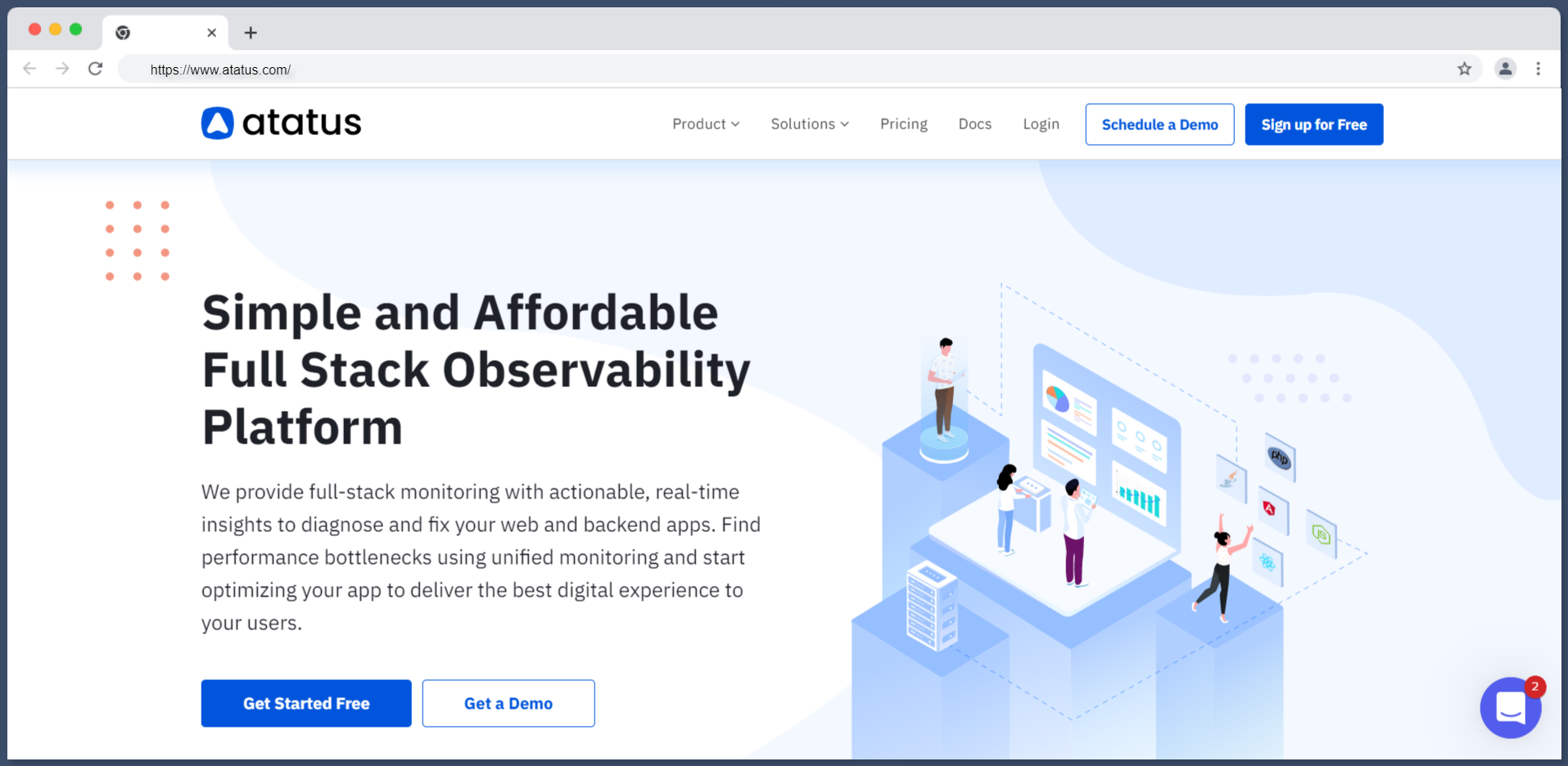
#2 Dynatrace
Dynatrace is a full-stack observability platform. It offers advanced observability for apps across multi and hybrid clouds at scale.
Apart from cloud monitoring, it has several other tools including digital business analytics. It has unlimited container and network process monitoring, AI detection of anomalies and root-cause determination and easily extensible properties with 600+ technology integrations.
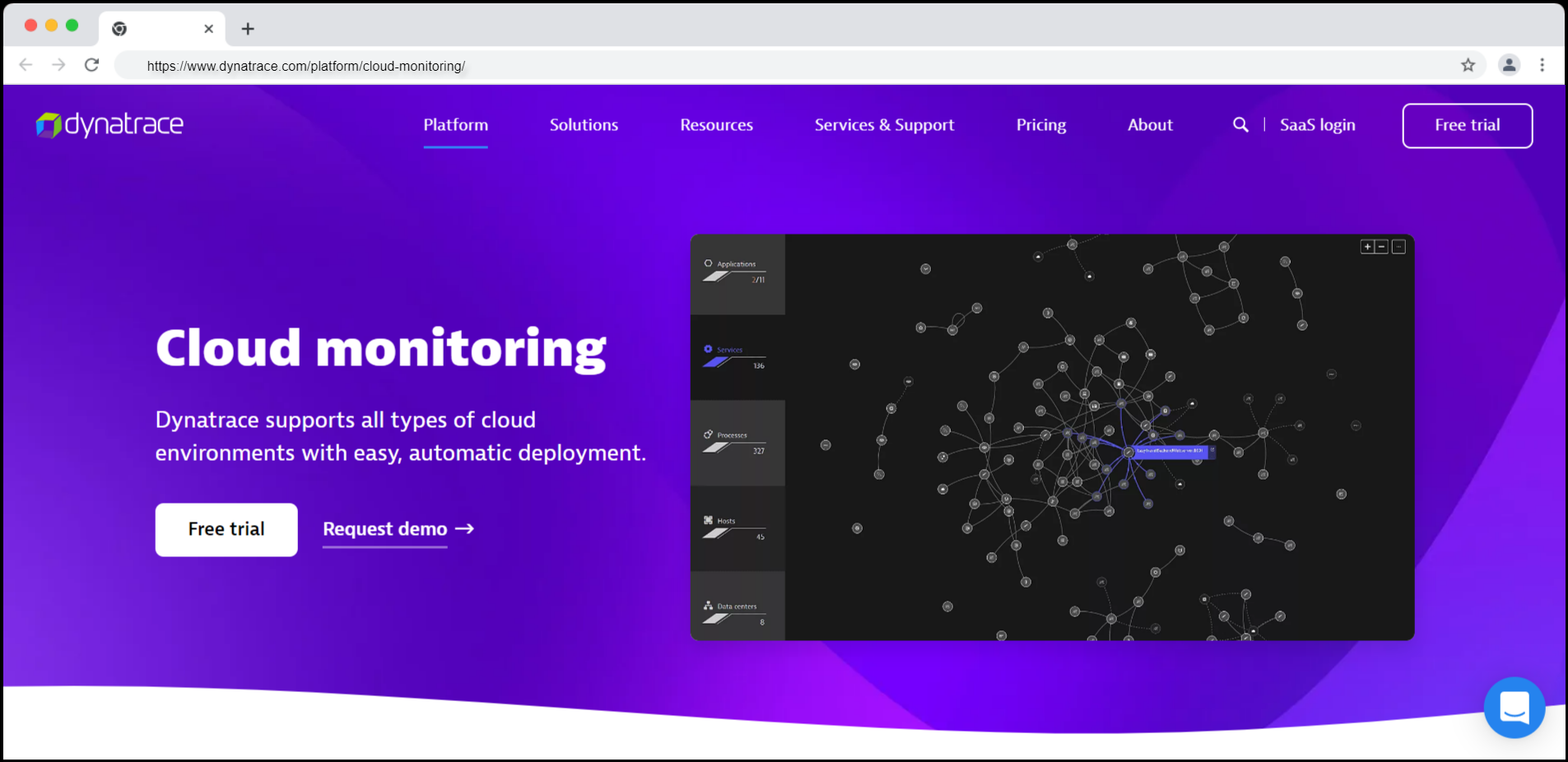
#3 SolarWinds
SolarWinds provides a unified visual dashboard for various components. It has several sub-tools that can either be used independently or together to bring out a comprehensive evaluation of your cloud service.
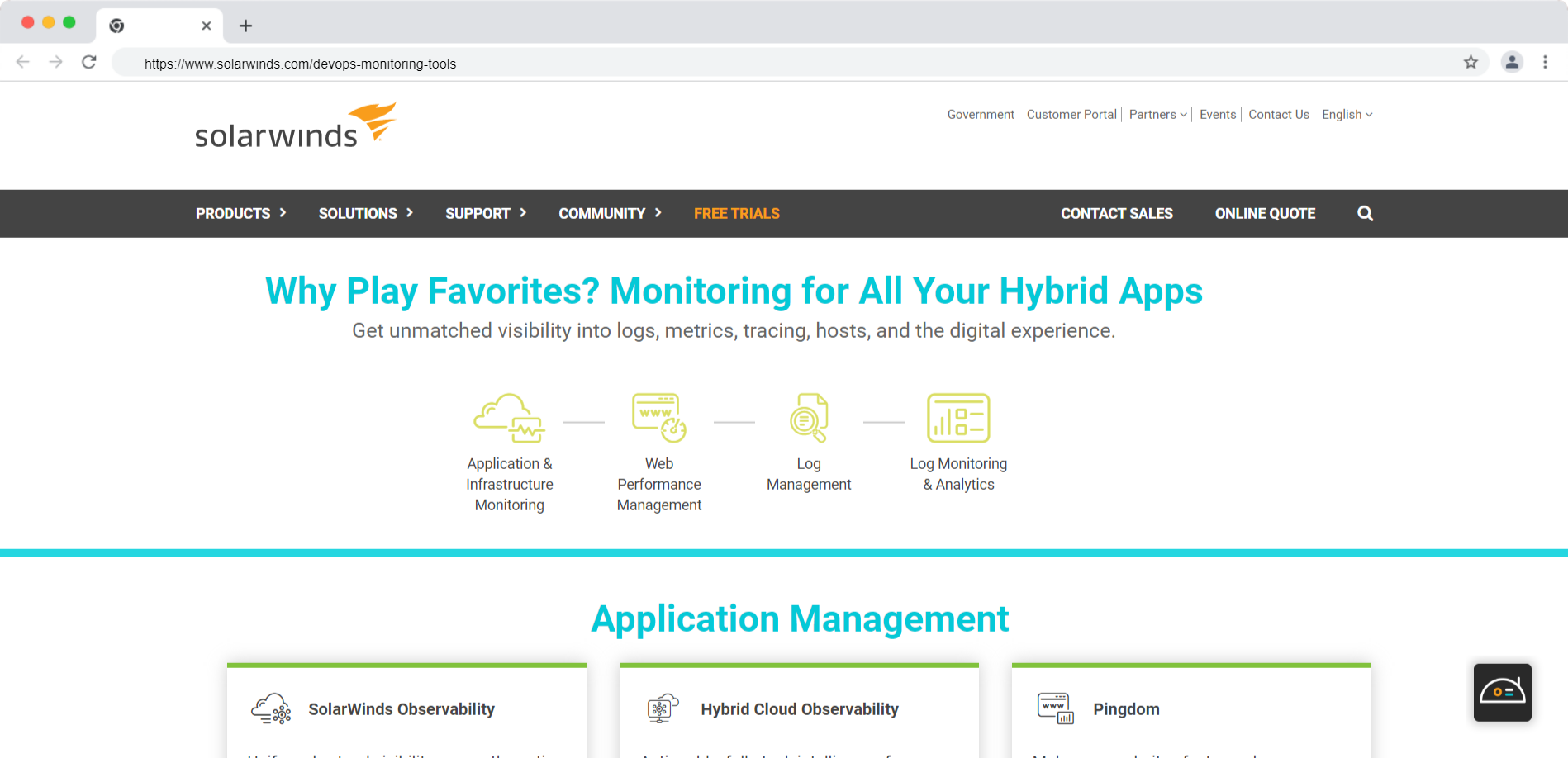
#4 Amazon CloudWatch
Amazon CloudWatch provides you with data and insights to monitor your application, respond to system-wide performance changes, optimize resource utilization and get a unified view of operational health.
It is a great tool to monitor applications running on the AWS ecosystem and on-premises servers.
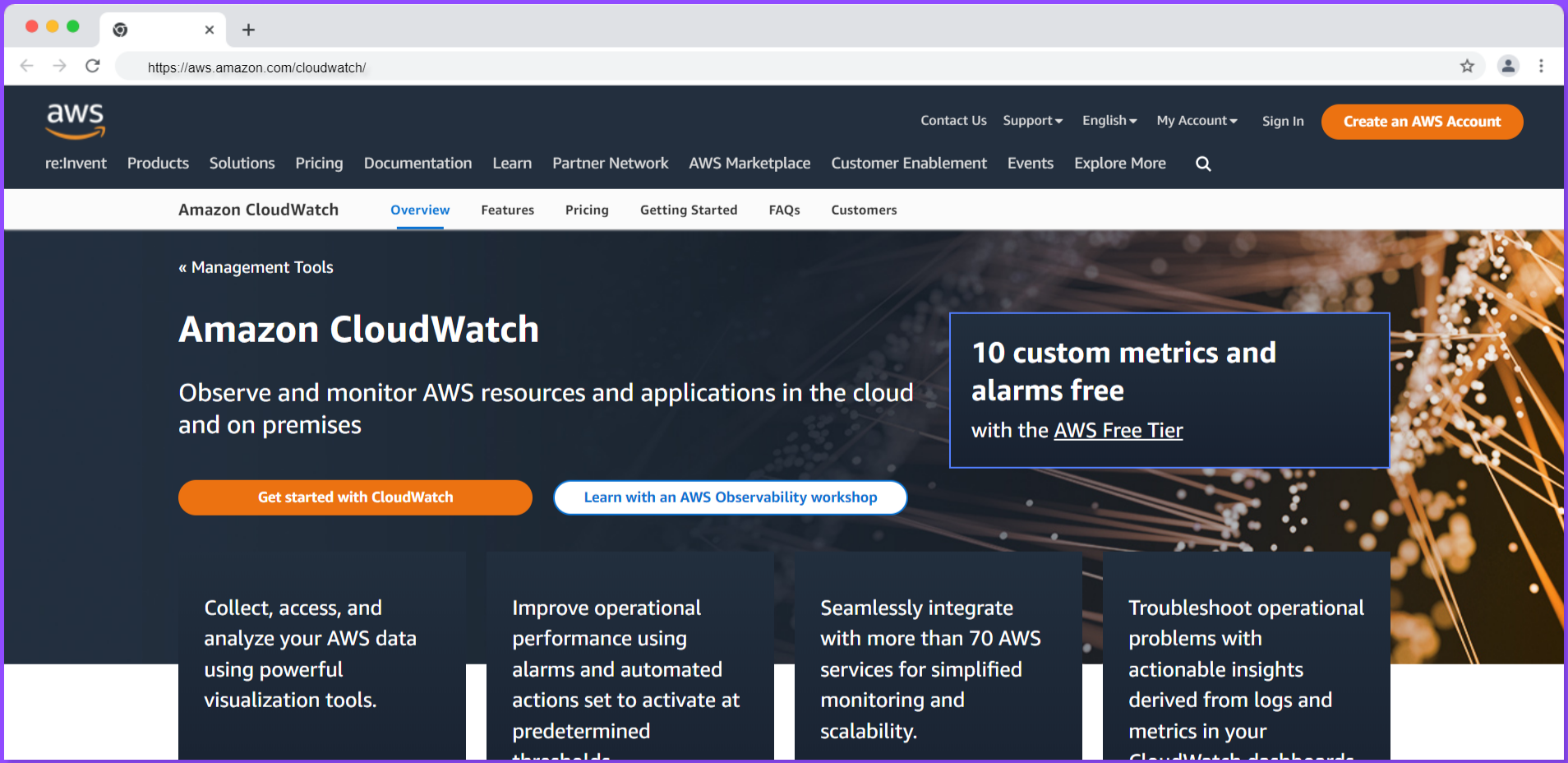
#5 Sumo Logic
Sumo Logic is a cloud-native SaaS analytics tool that can observe all events, logs and transaction traces. It runs on multi-cloud and hybrid environments too.
It can analyze 200 petabytes of data and 20 million searches daily, making it an ideal tool for start-ups.
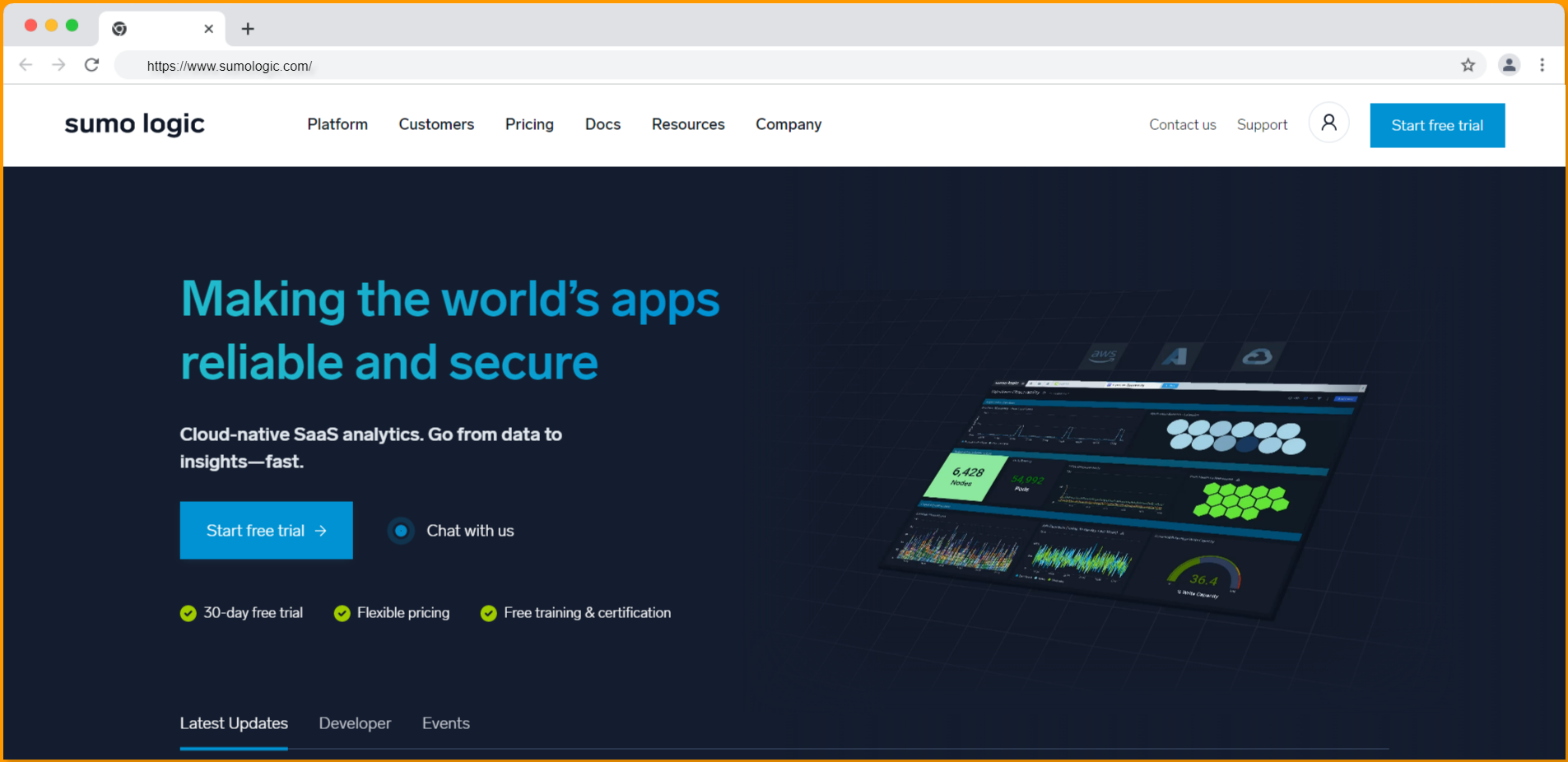
#6 Azure Monitor
Azure Monitor is a monitoring tool produced by Microsoft Corporation.
Developers can collect and analyze telemetry data to optimize Azure and on-premises services for healthy and robust performance.
This tool also monitors your application's network layout and has a well-placed alert system for exhibiting threshold breaches.
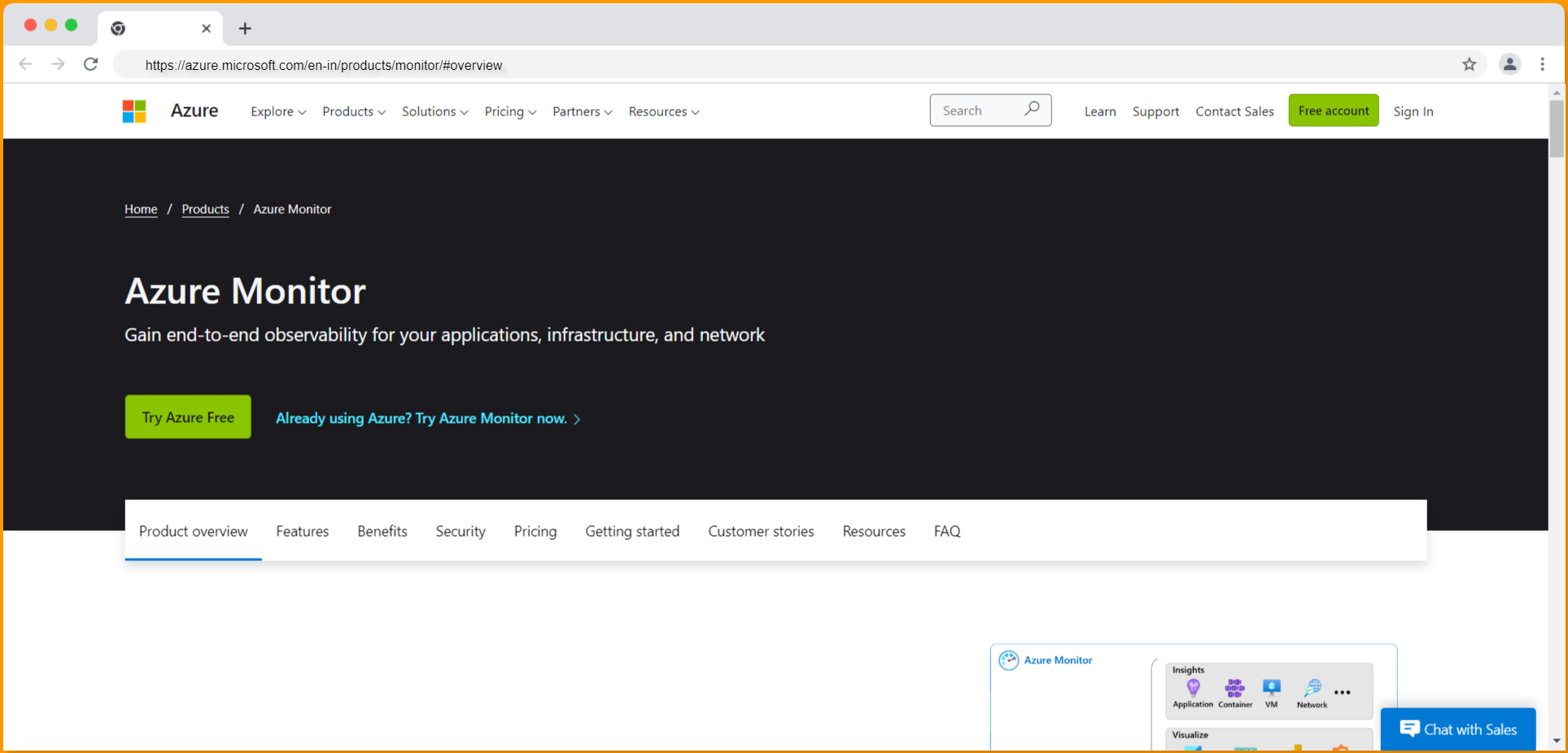
What are the metrics to be monitored?
- Cloud Security - Security is always a big concern. Unauthorized access to the cloud, cyberattacks and insecure interfaces can make your applications vulnerable to security threats.
- Application performance metrics - Common problems in the cloud that affect app performance are disk utilization and scalability features. Good monitoring tools allow you to track these changes in real time and fix them too.
- Service availability - For SaaS applications, an overload of content on the software can impede business performance. But monitoring tools compensate for this overload and adjust it to the available servers.
- Cloud costs - Maintaining a cloud is a costly affair. But many a time several leaks make our operation costlier. Meaning, hidden costs can be eliminated with the help of certain advanced monitoring tools that identify such leaks. Infrastructure monitoring - infrastructure includes VMs, databases, storage etc. i.e., hardware and software. Monitoring helps us track changes occurring in these and fix them.
- Uptime - This metric measures the percentage of time a service or system is available to serve customer requests. Increased uptime is directly proportionate to increased revenue for the developers.
Benefits of Monitoring Tools
- No need for installation, so configuration is easier.
- Scalability is not a problem. Choose the right tool with features that fit your application.
- Improves the security of your applications.
- Increases productivity by analyzing speed metrics and resolving errors.
- They are a form of proactive risk remediation mechanism.
- Operable on all devices - VMs, desktops, mobile etc.
- Increased cloud visibility.
- Subscription-based solutions can keep costs low. Also, cloud cost leaks can be curtailed owing to complete transparency.
- Monitoring tools provide engineers with the ability to observe what happened during multi-point failures, allowing them to troubleshoot and debug them.
Cloud Monitoring Best Practices
Here we list some of the best practices that you can follow while using a cloud monitoring tool to make the best use of it.
- Start with simple, native tools available with the provider before you hop onto robust cloud monitoring services.
- List out all the activities that you want to monitor on your cloud. Group them on the basis of their importance to the proper functioning of your applications.
- Assign a particular platform for the recovery of results - like a dashboard. This will help in eliminating the disorganization of monitored data. Also, make accessing this result serviceable.
- Beware of cost implications while using cloud monitoring tools. In the case of a subscription-based solution, choose one which gives you optimal results of cost division for various works.
- Implement a cloud-based cost intelligence solution that gives you output on cost per customer or per product - such that validating these results will be easier for the admin.
- Related to scaling up or scaling down cloud services based on app traffic - choose tools that automate such activity after analyzing the thresholds for effective performance.
- Monitor end-user experience - response time, request delay, and crash reports are some of the metrics that help improve customer experience.
- Evaluate the alert system by trying out failures earlier on so that there are no sudden downfalls in the performance.
Conclusion
Security is of utmost importance, especially when you are dealing with applications that contain personal information.
It is obvious to upload a service onto the cloud for ease of management and control, but we shouldn't compromise on its security or performance once it's uploaded onto the cloud.
This is where the cloud monitoring tools help us.
Not only do they keep our app safe from cyber attacks, but also make them more productive and functional by giving out regular inputs on their health and speed metrics. The automated scale-up and down is a sigh-heaver for developers and cloud engineers alike.
Follow the best practices listed above to make maximum use of your cloud monitoring tool.
Monitor Your Entire Application with Atatus
Atatus is a Full Stack Observability Platform that lets you review problems as if they happened in your application. Instead of guessing why errors happen or asking users for screenshots and log dumps, Atatus lets you replay the session to quickly understand what went wrong.
We offer Application Performance Monitoring, Real User Monitoring, Serverless Monitoring, Logs Monitoring, Synthetic Monitoring, Uptime Monitoring, and API Analytics. It works perfectly with any application, regardless of framework, and has plugins.

Atatus can be beneficial to your business, which provides a comprehensive view of your application, including how it works, where performance bottlenecks exist, which users are most impacted, and which errors break your code for your frontend, backend, and infrastructure.
If you are not yet a Atatus customer, you can sign up for a 14-day free trial .
#1 Solution for Logs, Traces & Metrics
APM
Kubernetes
Logs
Synthetics
RUM
Serverless
Security
More



![New Relic vs Splunk - In-depth Comparison [2025]](/blog/content/images/size/w960/2024/10/Datadog-vs-sentry--19-.png)
![New Relic vs Sentry - Which Monitoring Tool to Choose? [2025]](/blog/content/images/size/w960/2024/10/VS--1-.png)
![Splunk vs Prometheus: A Side-by-Side Comparison [2025 Guide]](/blog/content/images/size/w960/2024/08/Datadog-vs-sentry--13-.png)